Harry Bryan’s 12’ Thistle is powered by a large rudder shaped like a fish’s tail and driven by foot pedals. With steady pedaling you can keep pace with about any rowboat of the same length.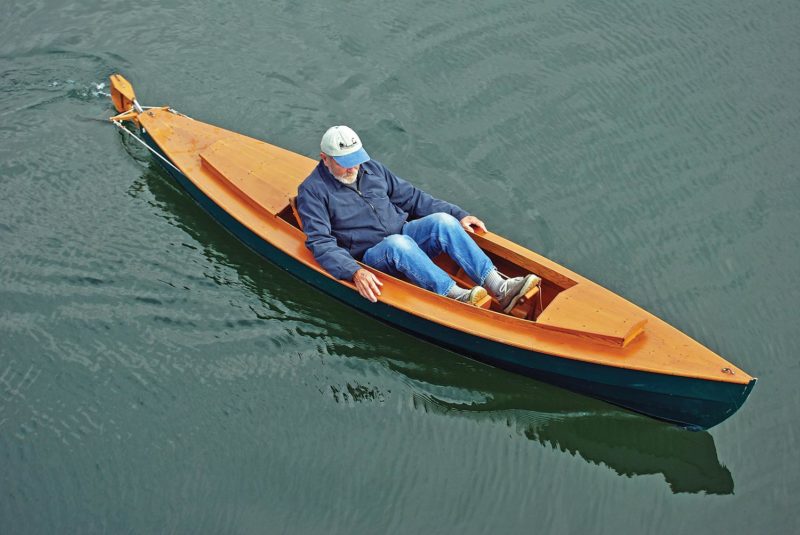 Matthew P. Murphy
Matthew P. Murphy
Join The Conversation
We welcome your comments about this article. To include a photo with your remarks, click Choose File below the Comment box.

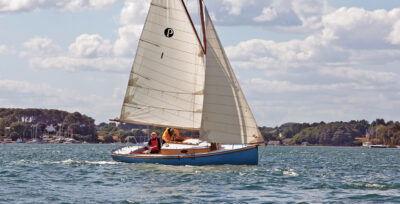
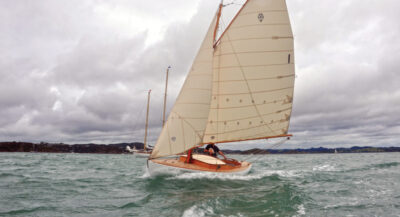
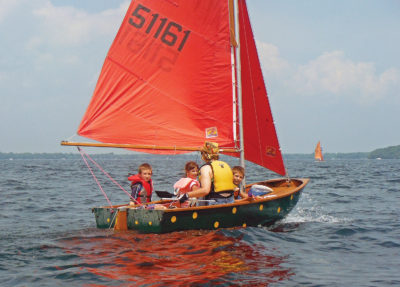
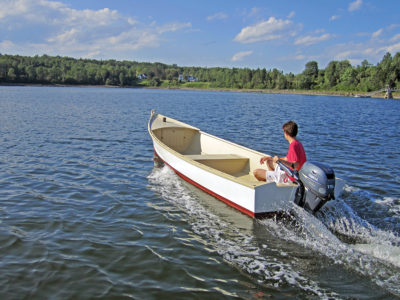
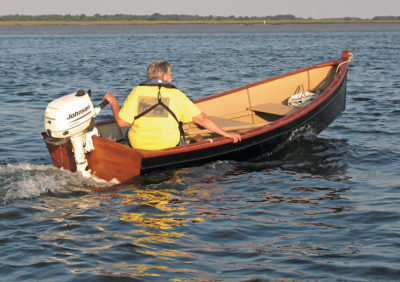
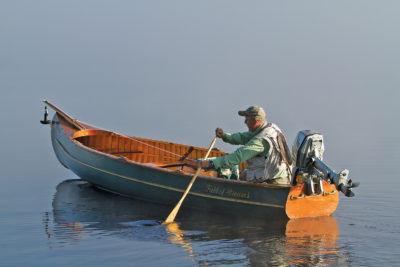
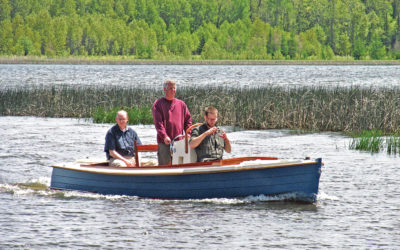

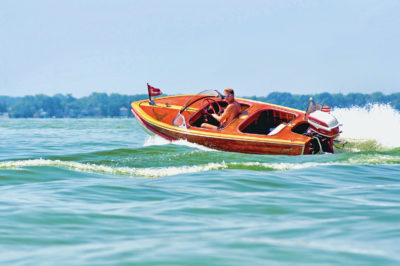
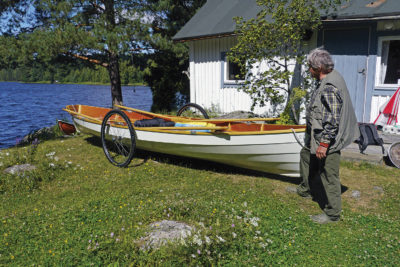
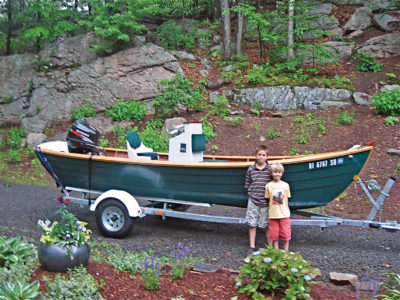
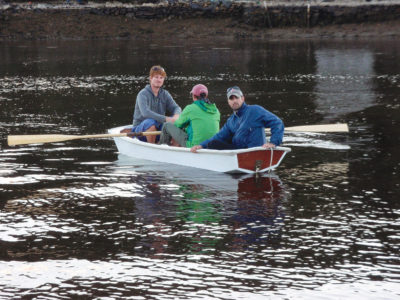
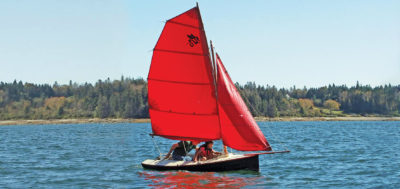
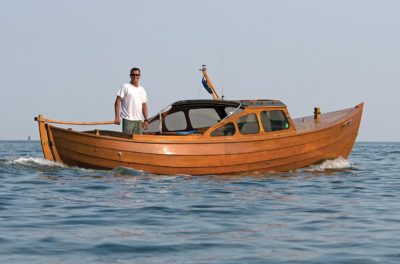
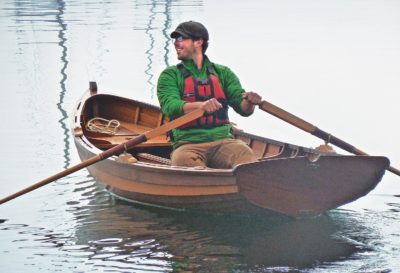

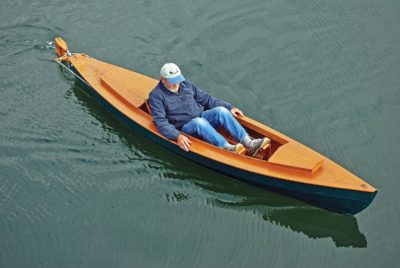
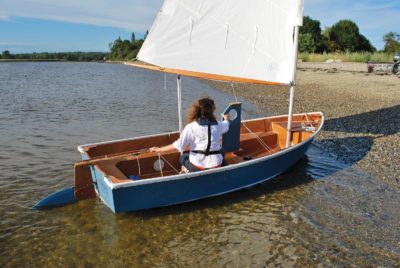
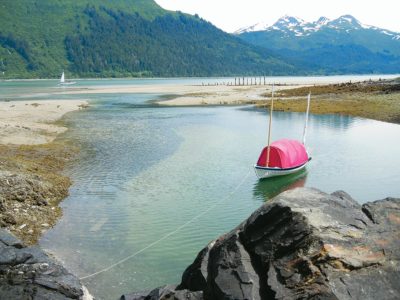
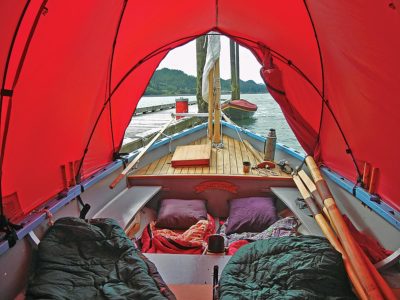
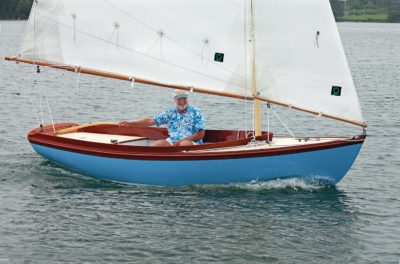

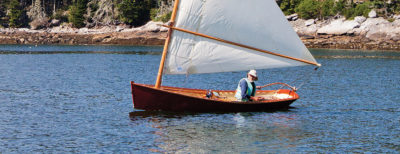
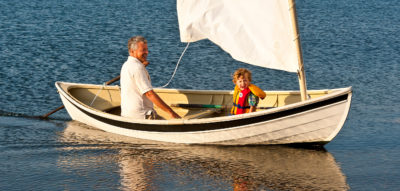
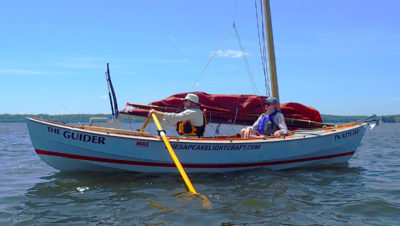
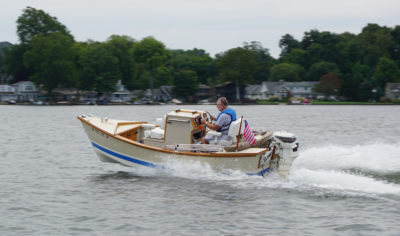
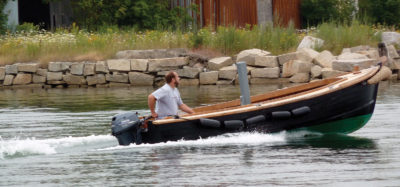

Just launched our Thistle last month (5/23) A fun build with lots of challenging parts. I opted for glued-lap construction and it works fine. I can’t quite keep up to a kayak but it takes little effort to keep it moving at a reasonable speed.
I bought the plans and I love the idea behind the fin drive. So please forgive me my following remarks. The boat could be nicely fit with a Mirage drive. There are two possible positions for that. Either, and most simple, in front of the seat, instead of the pedals, or behind the seat. In that case the pedals remain in place and connecting ropes go back to the mirage drive. Add a rudder and remove the fins. For sailing, attach leeboards.
I wonder what the relative efficiency would be. A drawback to the Mirage drive units on Hobie tris is that it is vulnerable to hitting the bottom, being located under the hull, and features more complex engineering.
I have converted two canoes with the classic Mirage Drive. The efficiency is excellent. The boat does not wiggle like the fin drive of the Thistle. If you ever hit the bottom, the draft of the short Mirage fins are roughly 12″, it stops the boat, thats it. No damage.
But there is a newer model with fins that swing up longitudinally, if one is concerned. I think use in coral waters might be the reason for that. The Mirage Drive unit itself is a well-thought-out piece of engineering, but installing it on a boat is not complex at all. (I am not paid by Hobie Kayak, nor am I an agent. I am a strict amateur and I love that drive.)
If I were to build a Thistle, I would probably substitute the fragile-seeming keels for a pair of short daggerboards. They would make for better handling ashore and in the shallows.
As for the fin drive, I bet an old scuba diver’s fin would work well too and simplify construction and use over the twin articulated joints and the Lexan. Of course, as Axel pointed out, the Mirage drive makes for a better, if more expensive alternative.